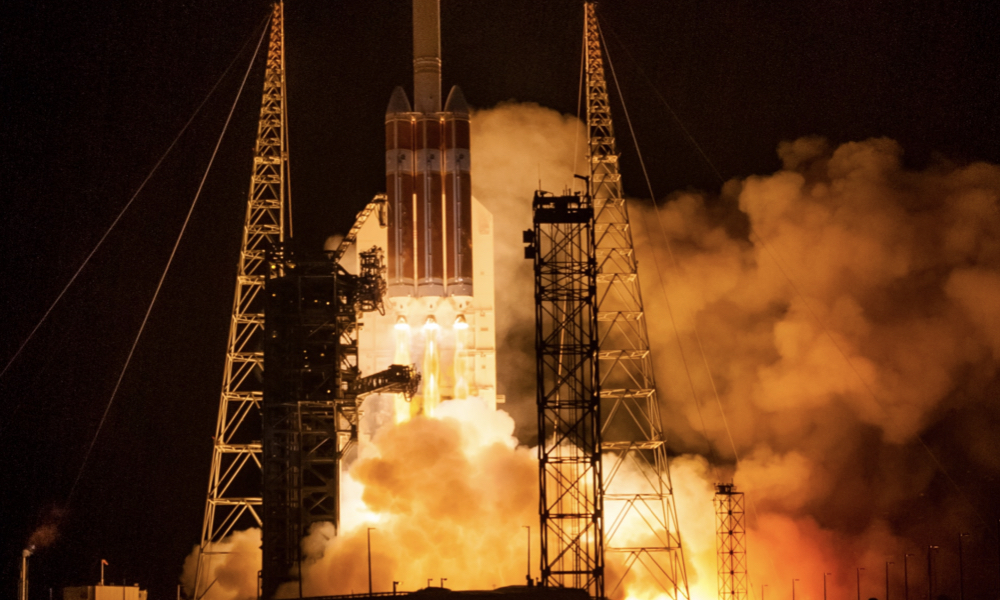
ESA Open Invitation to Tender AO9168
Open Date: 15/02/2018
Closing Date: 29/03/2018 13:00:00
Status: ISSUED
Reference Nr.: 17.1EP.04
Prog. Ref.: Technology Developme
Budget Ref.: E/0901-01 – Technology Developme
Special Prov.: BE+DK+FR+DE+IT+NL+ES+SE+CH+GB+IE+AT+NO+FI+PT+GR+LU+CZ+RO+PL+EE+HU
Tender Type: C
Price Range: 200-500 KEURO
Products: Satellites & Probes / System Engineering Software / Environment Models and Computational Tools / Radiation belts, Solar energetic particles, Galactic cosmic rays, ¿
Techology Domains: Spacecraft Environments and Effects / Environment Effects / Effects Analysis Tools
Establishment: ESTEC
Directorate: Directorate of Tech, Eng. & Quality
Department: Electrical Engineering Department
Division: Power & Energy Conversion Division
Contract Officer: Casini, Gian Lorenzo
Industrial Policy Measure: C3 – Activities restricted to SMEs & R&D organisations, prefe…
Last Update Date: 15/02/2018
Update Reason: Tender issue
Microparticles pose a significant threat to space missions. Due to their high velocity of up to the order of several tens of kilometres per second even small particles can cause damage to s/c. In addition, challenging attitude stability requirements for some missions require to consider attitude disturbances caused by impacting particles. Thus, a vital stepESA/IPC(2017)81 Annex II, Page 47, for designing such missions is to understand the impact of microparticle fluxes on the s/c attitude. The microparticle population canbe separated into man-made debris in Earth orbits and to the natural micrometeoroid environment in the solar system. The populationsare quite distinct in terms of particles sizes, directionality and velocities. Impacting particles will transfer momentum and torque to a s/c. This is relevant for scientific missions as esp. drag-free contol concepts because of the required compensation of torques but also for high-accuracy Earth observation missions or any other mission with high pointing stability requirements. The LISA mission for example requires to maintain a link over 1.5 million km. As of today there is no tool available to determine attitude disturbances from microparticle impacts. Several ESA science missions will be operated beyond Earth orbits and be exposed to the interplanetary meteoroid environment, e.g. JUICE, ATHENA, SolO, Euclid, Plato. It has been shown by dedicated assessments, e.g. for Hipparcos, GAIA and LISA PF, that the meteoroid flux can be deduced from AOCS data. This methodology is based on the momentum transferred in impacts to stabilized s/c which needs to be compensated by the AOCS system. Thus, science missions could systematically support the validation of interplanetary meteoroid models by providing additional measurements and thereby reduce the uncertainties for futuremissions. This study aims to develop an engineering tool to predict the attitude disturbance to s/c based on a impacting flux of microparticles and to reconstruct the micrometeoroid flux based on attitude disturbance data. It is expected that external s/c surfaces and mass properties of the s/c need to be modelled in the tool. Then, the momentum transfer by impacting particles needs to be simulated, presumably by Adaptive Smooth Particle Hydrodynamics (AHPS) and the AOCS response modelled. The main drivers, uncertaintiesand potential key enablers shall be determined for both intended applications, derivation of attitude disturbances for future missions and derivation of microparticle fluxes from in-orbit data. For example, it is anticipated that additional sensors might be required on s/c in order to determine the location of microparticle impacts and thus to allow for reconstruction of momentum transfer andrespective micrparticle flux derivation. To the extent possible the tool should be applied to operating and upcoming science missions (LISA) in order to validate the tool, assess disturbances on mission designs and determine microparticle fluxes from data.Procurement Policy: C(3) = Activity restricted to SMEs RD Entities. For additional information please go to EMITS news “Industrial Policymeasures for non-primes, SMEs and RD entities in ESA programmes”.
If you wish to access the documents related to the Invitation to Tender, you have to log in to the ESA Portal.
